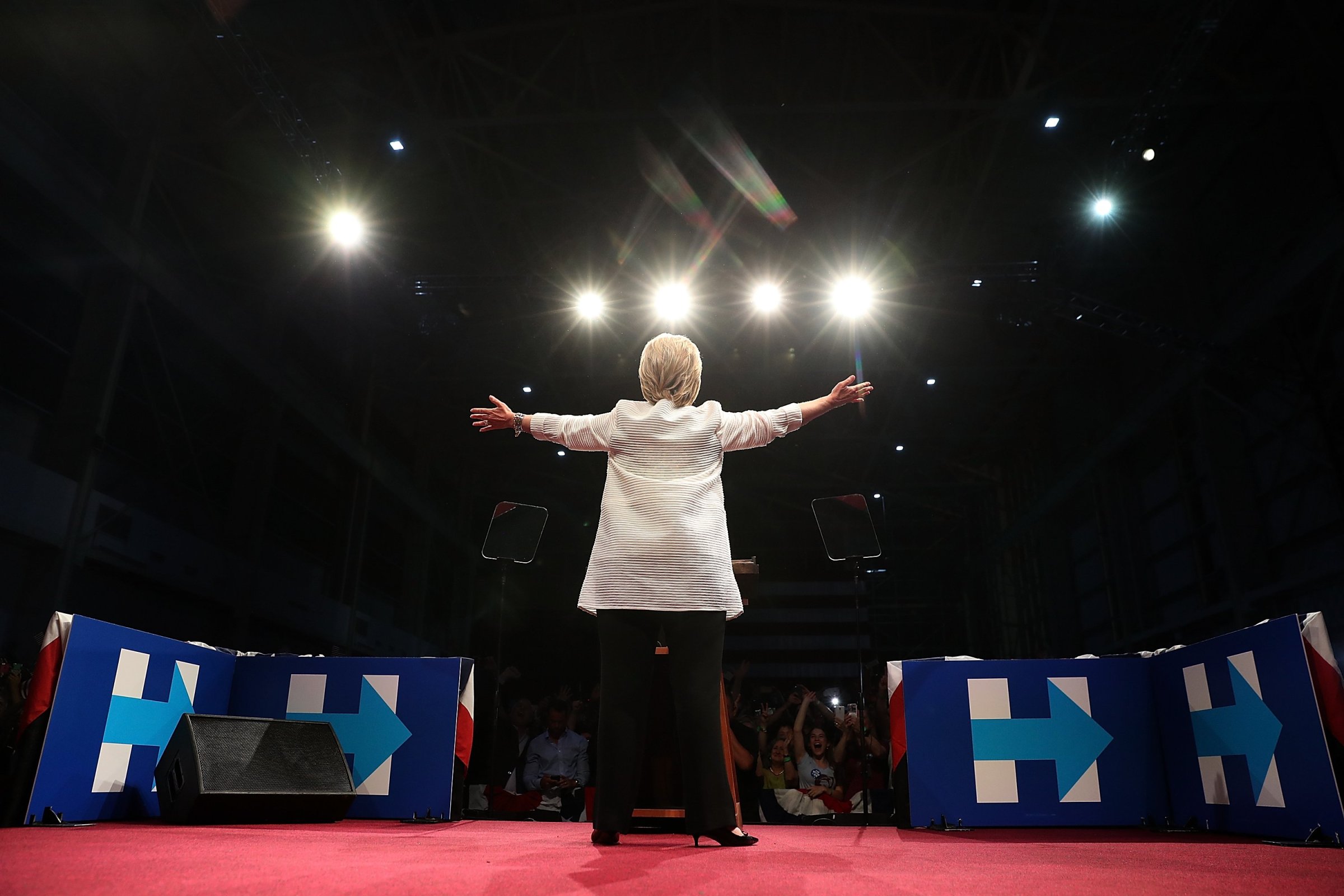
Hillary Clinton claimed victory on primary night Tuesday as the first woman to be a major party’s presumptive nominee for president. To emphasize the historic nature of the former Secretary of State’s achievement, her campaign released a video called “History Made” that pays homage to the American women throughout history who paved the way for Clinton’s achievement.
Though the video pulls from some of Clinton’s own best-known speeches and pulls in the voices of several 21st-century activists—like women fighting for the rights of transgender people and immigrant communities—its focus is on the women of the past, going all the way back to the earliest days of the American push for equal rights, and equal political representation, for women.
Here are some of the famous historical figures who either are speaking or are seen in the video:
Suffragists (0:03-0:12): Clinton gives a shout-out to the early suffragists who fought for women’s right to vote and met at the 1848 Seneca Falls Convention in Seneca Falls, N.Y., to issue the Declaration of Sentiments, a founding document in the American women’s rights-movement.
Shirley Chisholm (0:16-0:23): She became the first African American woman elected to Congress in 1968 when the Democrat won a U.S. House seat in her native Brooklyn, N.Y. Chisholm ran for president in 1972.
Gloria Steinem (0:24-0:26): The Ms Magazine founder and women’s-movement leader was, with Chisholm, a founder of the National Women’s Political Caucus. A still image also shows her with the late civil rights leader Coretta Scott King, wife of the Rev. Martin Luther King, Jr., who established The Martin Luther King, Jr. Center for Nonviolent Social Change.
Rosa Parks (0:27-0:34): The civil-rights activist is known for refusing to move to the back of a bus in Montgomery, Ala., an act that prompted the 1955-1956 protests said to make up the first high-profile, large-scale demonstration against segregation.
Margaret Chase Smith (0:39): The Maine Republican was the first woman elected to both Houses of Congress (U.S. House from 1940 to 1948 and the Senate from 1948 to 1972) and, at the 1964 Republican National Convention, she became “the first woman to have her name put in for nomination for the presidency by a major political party,” according to the House archives.
Sandra Day O’Connor (0:41): The Supreme Court’s first female justice is shown being sworn in on Sept. 25, 1981.
Dolores Huerta (0:47): Chanting “¡Si Se Puede!“ is the labor and migrant-rights activist who in 1962 helped launch the National Farm Workers Association, a precursor to the United Farm Workers of America.
Patsy Takemoto Mink (0:54): The Hawaii Rep. was the first woman of color elected to Congress. She’s known as the “Mother of Title IX,” one of the 1972 amendments that prohibits sex discrimination at education programs receiving federal funds, which led to the rise of female sports teams.
Ann Richards (1:08-1:14): The then-Texas State Treasurer became a national name with this famous line from keynote address to the 1988 Democratic Convention. She went on to be elected Governor of Texas, serving from 1991-1995. Her appearance in the video is followed by a voice-over from Cecile Richards (1:15), her daughter, who speaks about carrying on her legacy. Cecile Richards has been the President of the Planned Parenthood Federation of America during a period of high-profile funding battles.
The other modern-day people who appear or are heard in the video include teen voting-rights advocate Madison Kimrey, young volunteer Olivia Berg and “dare to compete” speaker Sofia Totti Bernardin.
More Must-Reads From TIME
- The 100 Most Influential People of 2024
- Coco Gauff Is Playing for Herself Now
- Scenes From Pro-Palestinian Encampments Across U.S. Universities
- 6 Compliments That Land Every Time
- If You're Dating Right Now , You're Brave: Column
- The AI That Could Heal a Divided Internet
- Fallout Is a Brilliant Model for the Future of Video Game Adaptations
- Want Weekly Recs on What to Watch, Read, and More? Sign Up for Worth Your Time
Write to Olivia B. Waxman at olivia.waxman@time.com